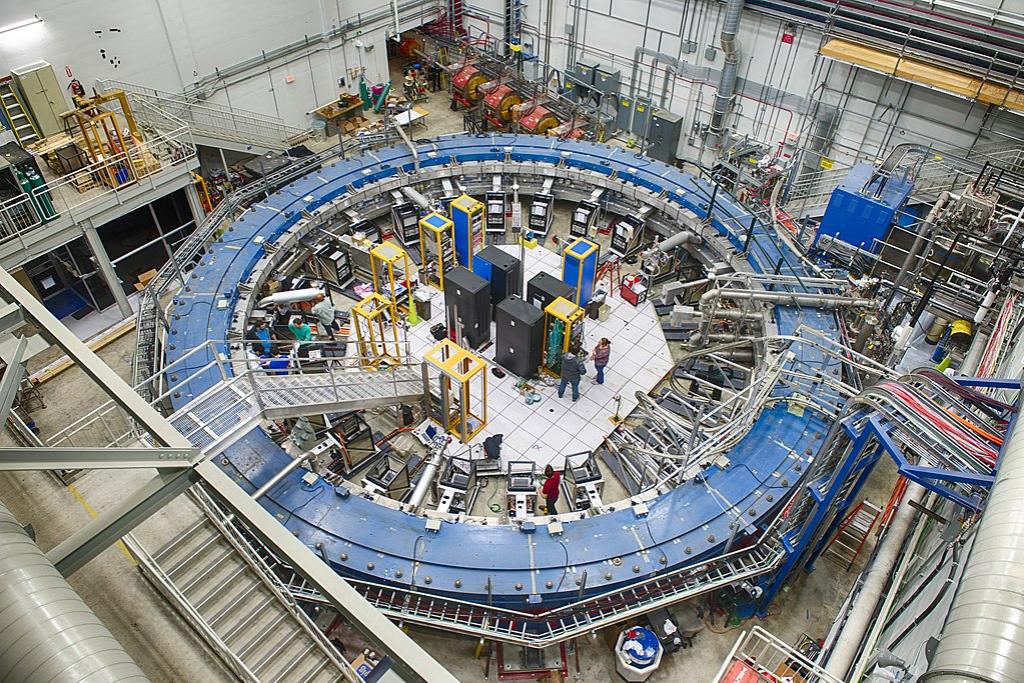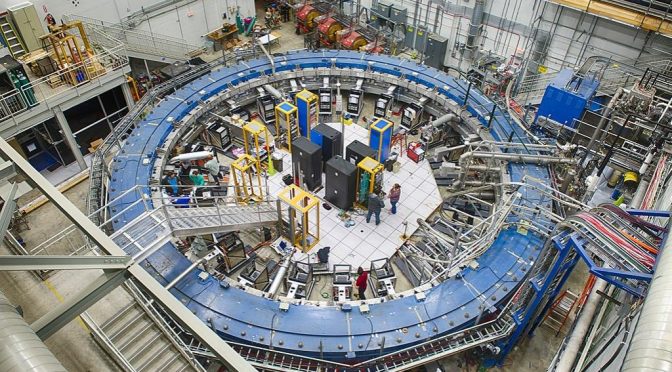
The ‘Muon g-2’ experiment conducted at the Fermi National Accelerator Laboratory (also known as Fermilab) in the United States has provided strong evidence for the existence of a new fundamental force of nature.
We currently know of four fundamental forces, the strong and weak nuclear forces, the electromagnetic force and the force of gravity. This latest experimental evidence could be a step on the way to adding a fifth force to this list.
The experiment has been studying the behaviour of muons – particles similar to electrons but around 200 times more massive – as they wobble in response to a magnetic field.
A muon’s behaviour in these magnetic fields is determined by a quantity known as its ‘g-factor’, which is a measure of the strength of the particle’s own internal magnetic field. However, the muon’s wobble should also be influenced by the existence of what’s know as ‘quantum foam’. This is a host of virtual particles, predicted by quantum field theory to instantaneously pop in and out of existence in the vacuum of empty space.
The results of the Fermilab experiments show that the size of the effect of this quantum foam on the muon’s wobble is greater than predicted by the ‘Standard Model’ of particle physics – the theory describing the known fundamental forces in the universe (not counting gravity which doesn’t yet fit in with our understanding of quantum mechanics) and classifying all known elementary particles. This could mean that a new fundamental force or particle is affecting the muons’ behaviour.
So far the evidence for a new force is strong – around the ‘4.1-sigma’ level, meaning that there is around a one in a 40,000 chance that the result could be a statistical fluke. However more research will be needed to reach the 5-sigma level – a one in 3.5 million chance of the observation being a coincidence – that is required by the scientific community to claim a new discovery.
If it turns out that a new fundamental force needs to be added to the list, this could revolutionise our understanding of the universe, perhaps providing an explanation for problems with our current cosmological models such as the unknown nature of dark energy and dark matter.
To read more, visit https://news.fnal.gov/2021/04/first-results-from-fermilabs-muon-g-2-experiment-strengthen-evidence-of-new-physics/
